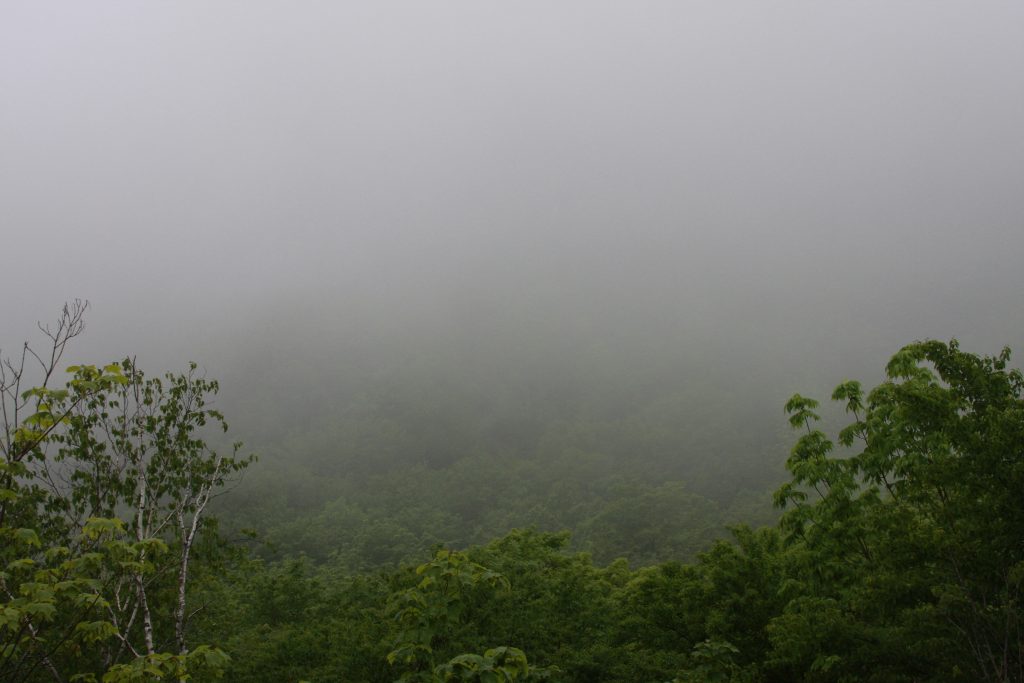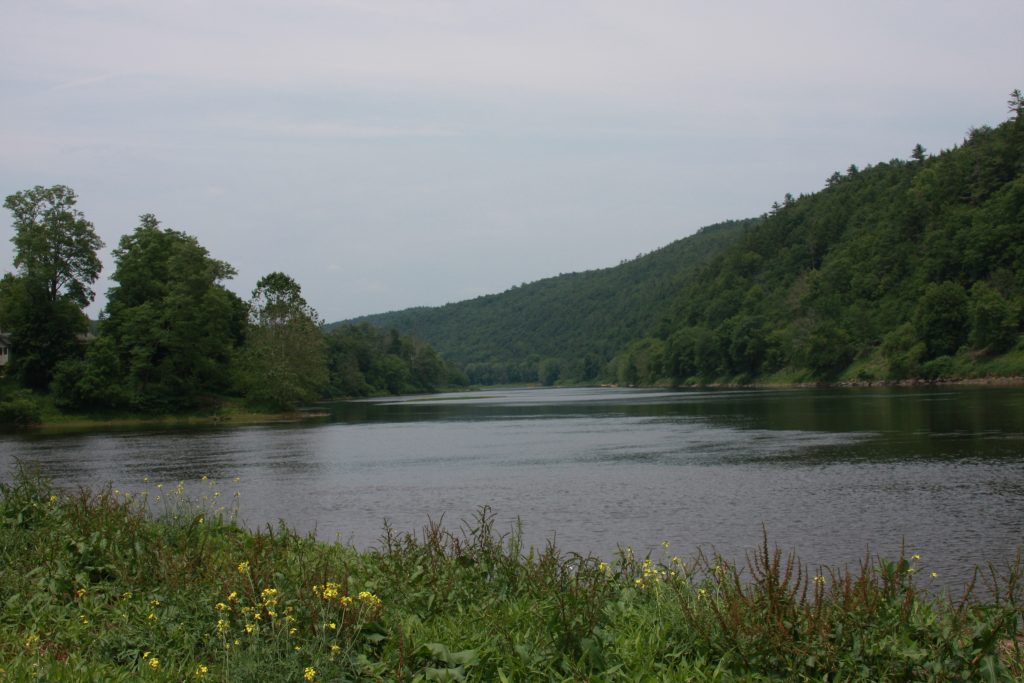The weather finally gets me!
Through my first eight trips, I’ve had amazingly great weather. There have been a few rainy days such as last year in Yellowstone and Grand Teton National Parks, but in every other instance of “less than perfect” weather, my visits have not been impacted.
On this trip, rain and fog seemed to follow me, showing up in force at every “scenic” stop while giving me a pass at most of the indoor sites.

Nonetheless, I still enjoyed the trip and seeing what I was able to see. This was my most ambitious trip to date, covering 19 different sites in seven states while driving some 4,000 miles (and saving another 1,000 by taking the Amtrak AutoTrain home).
This trip started in Buffalo, New York after a long two-day drive from Florida. I have relatives in Buffalo, some who I haven’t seen in many years, so I stayed a few days. One morning was dedicated to visiting the Theodore Roosevelt Inaugural National Historic Site. For being so close to downtown, it was easy to get to and had plenty of free parking. The details of Roosevelt’s journey to Buffalo after the assassination of McKinley are covered in a variety of ways through each room of the house.
From here, I headed east to the Women’s Rights National Historical Park highlighting the struggle for equality women and other groups faced. After noon I headed to the Harriet Tubman National Historical Park. Unfortunately, this is not an NPS property, run by a local non-profit. They offer tours inside the home where Tubman lived, though I was not that interested in seeing it. I wanted to learn the history and was in the visitor center when a tour began. The vistor center was to be closed and I had to leave. I did head into the nearby town of Auburn to the Civil Rights Museum there, where Passport stamps are kept along with some NPS literature.
The next morning I headed back in time to the mid-1700s, visiting Fort Stanwyx. This fort played a role in the French and Indian War in the late 1850s and played a new role in the American Revolution. I stayed in that century for the afternoon with a visit to Saratoga National Historical Park. Fort Stanwyx played a role in the American victory at Saratoga, tying the day’s two sites together. My biggest takeaway, though, was in learning the worldwide fallout from the shocking American victory at Saratoga.
Vermont and New Hampshire both have just one NPS unit each, and since they are fairly close to each other, I visited both on the same day. Marsh-Billings-Rockefeller National Historical Park had a house I could tour (I didn’t) but of more importance, remembers the three owners of that house who contributed greatly to the concept of land management and stewardship, helping reforest Vermont and setting an example for others.
Saint-Gaudens National Historical Park introduced me to the park’s namesake who was one of the nation’s most famous sculptors. My art education is minimal so I had not heard of him, but his story is interesting and his sculptures exceptional.
I moved on to the highlight of the trip – Acadia National Park – known for its scenic mountains against the backdrop of the Atlantic Ocean. And it was fogged in. I’d occasionally catch a glimpse of the scenery, but most of the drive through the park was surrounded by grey.
Heading north, my next destination was Saint Croix Island International Historic Site. As an “International” site, I felt compelled to go across the border into Canada and view the island from the Canadian side. From here I headed to Millinocket, a town I last visited in 1970. It leads into Katahdin Woods and Waters National Monument. I arrived late afternoon and took a short drive through a corner of the park. It was a nice day with some nice scenery. But since I was coming back the next day, I didn’t take many photos. Silly me. The next day the woods were mostly socked in with fog. I got a few photos of hills bathed in a thin veil of fog but the great spots yielded nothing.
A long drive got me into western Massachusetts, where I popped into New York to visit the Martin Van Buren National Historic Site. The highlight is the home where a tour provided lots of background on Van Buren. I headed back to Massachusetts to visit the Springfield Armory National Historic Site. The Visitor Center would cause your anti-gun types to simply stroke out. It has hundreds of firearms on display from muskets and flintlocks to machine guns and handguns. The history of arms-making in America is covered at this park.
I next bypassed three sites that were clustered together in Hyde Park, New York to head into Pennsylvania and the Steamtown National Historic Site. I needed to be there on June 18 to enjoy an all-day expedition on one of the old trains that make up this park. The history of the steam engine is related here. Unfortunately, our excursion ran late and the visitor center closed when we returned, so I will need to return here one day to further explore.
I returned to New York where the Eleanor Roosevelt National Historic Site, the Home of Franklin D. Roosevelt National Historic Site, and the Vanderbilt Mansion National Historic Site are clustered within a few miles of each other. Unfortunately, they do not all keep the same hours and the Eleanor Roosevelt site was closed the day I arrived. According to its web page, the grounds were supposed to be open and only the house closed, but the entire site was closed, so I will need to return to it one day to actually see the house.
The FDR and Vanderbilt houses were interesting as were the stories about the people who lived in them. I give more details in the individual blogs on those sites.

The final three sites on this long trip kind of blur together! They are all located along the Delaware River in northeastern Pennsylvania (and the corresponding lands across the river in New York and New Jersey).
The Delaware Water Gap National Recreation Area is the southernmost of the three with several features in both Pennsylvania and New Jersey. The Upper Delaware National Scenic River, at the northern end, has a small contact station with brochures and passport stamps and even a sign. Somewhere between the two is the Middle Delaware National Scenic River. Where exactly its boundaries are is a mystery as no maps exist and no visitor center for it exists. Information and stamps are in the Delaware Water Gap Visitor Centers.
With nineteen sites under my belt – mostly – I headed south through Pennsylvania. After a quick stop to visit a friend and former coworker, I continued to Virginia where I caught the Amtrak AutoTrain the next morning. I was glad I took the train as it rained the entire way. Driving 12 hours on I-95 in the rain would not have been fun.
Steve